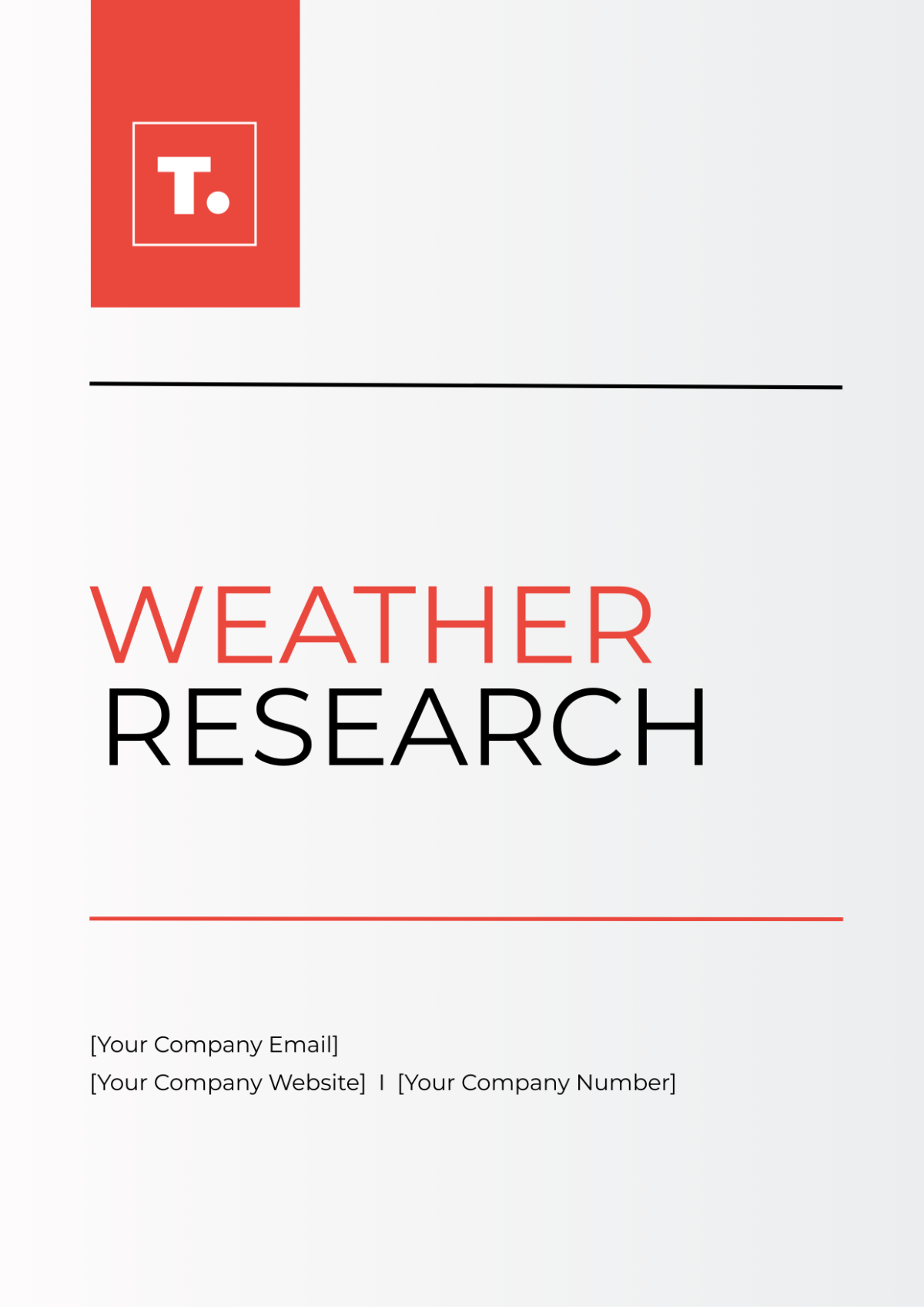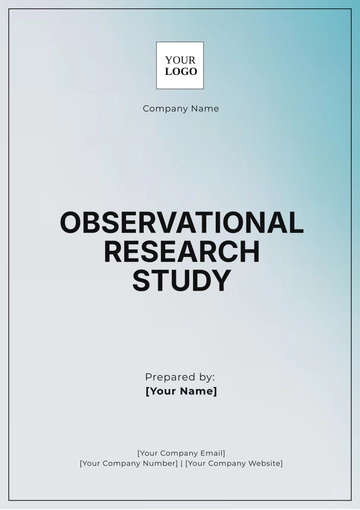Weather Research
Conducted by: [YOUR NAME]
Organization: [YOUR COMPANY NAME]
I. Introduction
The ability to predict weather accurately is a cornerstone of modern society, affecting sectors from agriculture to transportation. This research explores innovative methodologies to enhance the precision and extend the forecast lead times of weather prediction models.

Current limitations in weather forecasting stem from various factors, including model resolution, data quality, and the integrative processes of diverse meteorological data. Addressing these challenges can significantly benefit economies and populations worldwide by minimizing disaster-related losses and optimizing weather-dependent operations.
II. Advancements in Data Collection Technologies
A. Current Techniques
Recent advancements have revolutionized the collection of meteorological data. Current data collection methods include:
Satellite imaging for comprehensive coverage.
Radar systems for precipitative analysis.
Aircraft reconnaissance, especially in severe weather prediction.
Automated weather stations for granular, local data.
Oceanic and atmospheric buoys for sea condition monitoring.
B. Emerging Technologies
Innovative technologies aimed at refining data acquisition offer potential improvements in forecasting accuracy. Noteworthy technological initiatives encompass:
Drone technology for real-time, adaptive data collection.
Deployment of AI-based analytical tools for predictive analysis.
Enhancements in high-altitude ballooning for stratospheric data.
Integration of IoT sensors across various ecosystems.
Blockchain for secure and verifiable data sharing.
III. Improving Prediction Models
A. Machine Learning in Meteorology
Machine learning (ML) plays a pivotal role in enhancing predictive analytics in weather forecasting. Utilizing large datasets, ML algorithms can uncover patterns that traditional models might overlook. Key benefits of ML in meteorological models include:
Increased predictive accuracy.
Extended forecast lead times.
Enhanced ability to forecast extreme weather events.
Improved regional forecasting models.
The integration of multisource data for comprehensive analysis.
B. Predictive Model Adjustments
Forecast accuracy not only depends on data but also on the refinement of the models used. Strategies for improving these models include:
Increasing the spatial and temporal resolution of models.
Enhanced parameterization of physical processes.
Adoption of ensemble forecasting techniques.
Enhancement of computational efficiency and faster problem-solving.
Iterative feedback mechanisms for continuous model improvement.
IV. Case Studies and Impacts
Various global case studies illustrate the vital impact of enhanced forecasting methods:
Region | Technique | Impact | Reference Year |
|---|
South Asia | AI-based Cyclone Tracking | Reduction in evacuation costs by 30% | 2022 |
Europe | High-resolution Models | Improved flood warnings by 25% lead time | 2021 |
USA | IoT Sensor Networks | Accuracy improvement in tornado tracking by 40% | 2023 |
Australia | Drone Surveys | Faster bushfire detection and response | 2022 |
Global | Blockchain Data Sharing | Secure data leading to uniform global standards | 2022 |
V. References
Global Weather Data Science: Innovations and Trends - Journal of Atmospheric Research, 2022.
AI Technologies in Weather Forecasting - International Journal of Meteorology, 2023.
Advances in High-Resolution Weather Models - Climate Dynamics, 2021.
Impact of IoT on Weather Prediction Accuracy - Sensors and Systems Journal, 2022.
Blockchain for Meteorology: Ensuring Data Integrity - Weather Technology Review, 2022.
Research Templates @ Template.net































